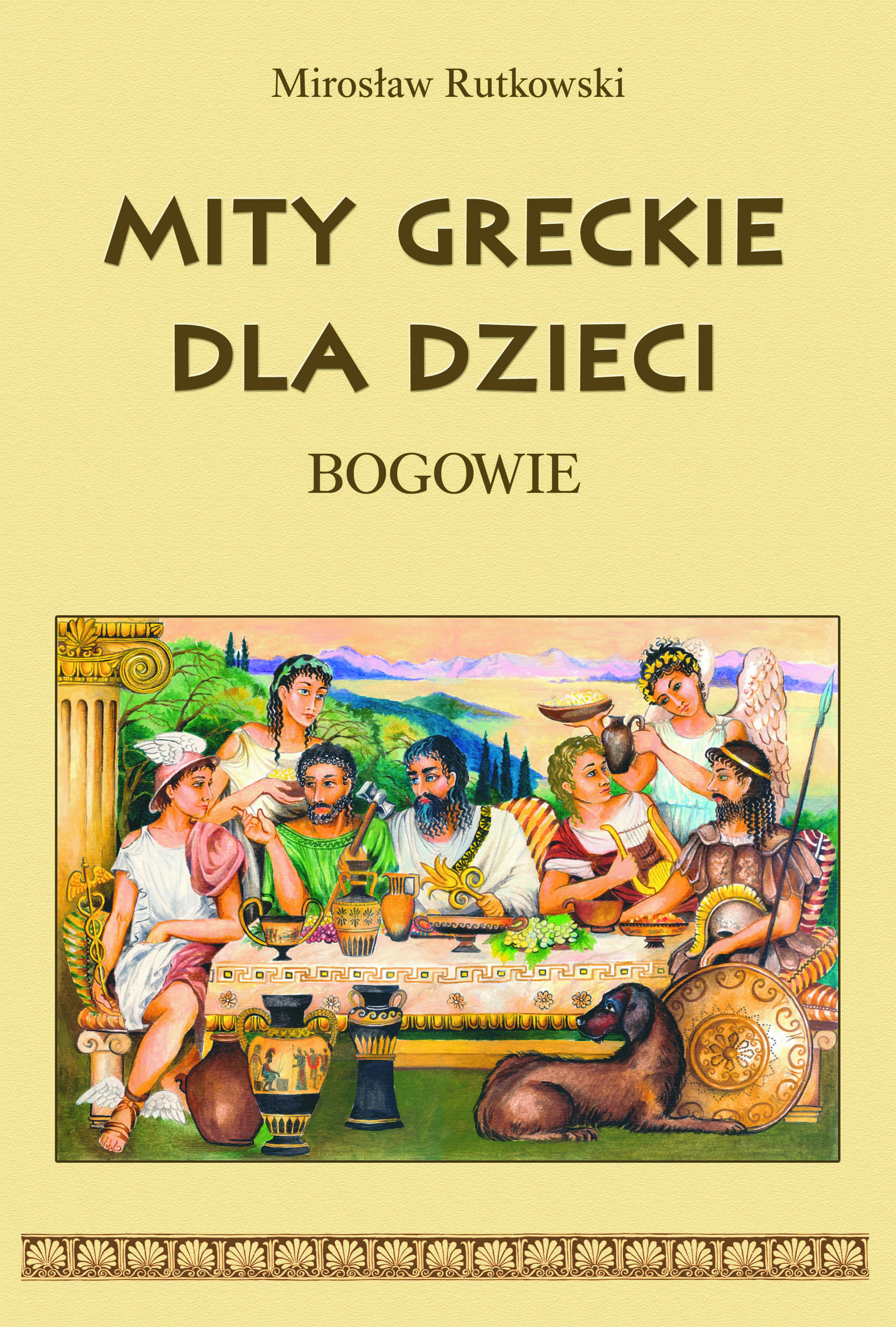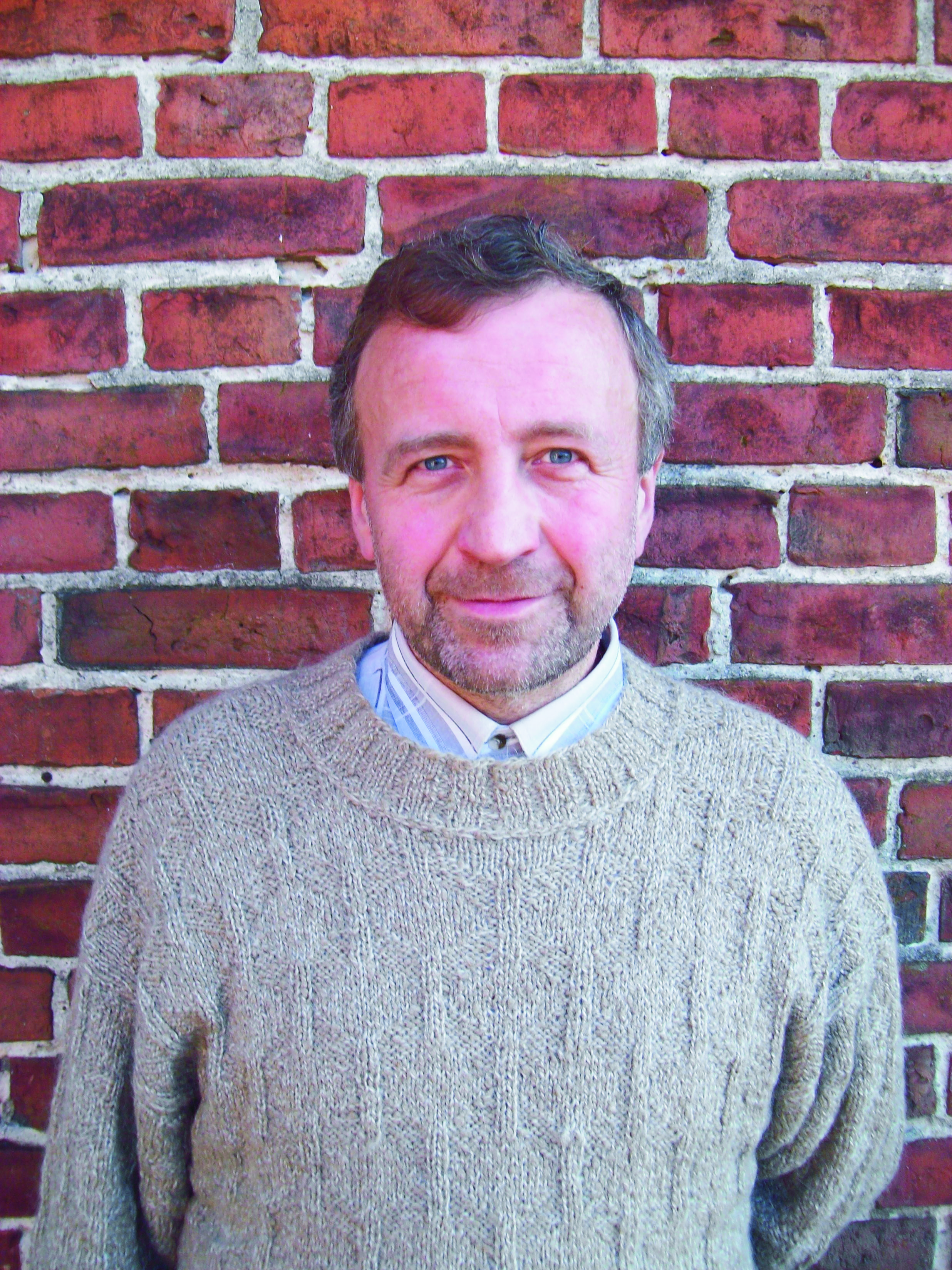Title of the work
Country of the First Edition
Country/countries of popularity
Original Language
First Edition Date
First Edition Details
Mirosław Rutkowski, Mity greckie dla dzieci. Bogowie. Kraków: Wydawnictwo Skrzat, 2003, 85 pp.
ISBN
Genre
Mythologies
Target Audience
Children
Cover

Courtesy of the publisher.
Author of the Entry:
Summary: Anna Górska, University of Warsaw, anna.gorskaa@gmail.com
Analysis: Marta Pszczolińska, University of Warsaw, m.pszczolinska@al.uw.edu.pl
Peer-reviewer of the Entry:
Katarzyna Marciniak, University of Warsaw, kamar@al.uw.edu.pl
Elżbieta Olechowska, University of Warsaw, elzbieta.olechowska@gmail.com
Courtesy of the Author.
Mirosław Rutkowski
, b. 1963
(Author)
Born in Cracow. English and Latin teacher at the I General Education High School in Stargard Szczeciński (north-western Poland) from 1990 to 2003. Authored two books for children on the topic of Greek mythology published by Wydawnictwo Skrzat in Cracow: Mity greckie dla dzieci. Bogowie [Greek Myths for Children. Gods], 2003, and Mity greckie dla dzieci. Herosi [Greek Myths for Children. Heroes], 2006. In 2012 Friends of Stargard Society published his book entitled Stargard nie tylko dla dzieci [Stargard Not Only for Children] describing the past and the present of the city. He lives now in Piasecznik by Choszczno, where he works on his farm.
Source:
Based on the material kindly provided by the Author.
Bio prepared by Anna Górska, University of Warsaw, anna.gorskaa@gmail.com
The Editors would like to express their thanks to Anna Lewicka, Director of Maria Dąbrowska Municipal Public Library in Choszczno, for the contact with the Author.
Summary
Based on: Katarzyna Marciniak, Elżbieta Olechowska, Joanna Kłos, Michał Kucharski (eds.), Polish Literature for Children & Young Adults Inspired by Classical Antiquity: A Catalogue, Faculty of "Artes Liberales", Warsaw: University of Warsaw, 2013, 444 pp., section by Anna Górska, pp. 326–331.
First part of a book cycle. Includes an introduction describing the origin of the world. Each chapter contains stories about different gods and mythical characters. Author begins with a presentation of myths about Hera and Zeus, then we read about other famous mythical gods: the dark Hades, Dionysus – the god of wine – and the wise Athena. Chapters are titled in an attractive manner recalling fairytales to intrigue the young readers, names are a bit mysterious and magical, with a lot of adjectives like, all-powerful, inscrutable or enchanting. The author does not modify the well known myths. He is trying to introduce children to the world of myths using a simple and clear language. Colourful maps help to understand the topography of Ancient Greece.
Analysis
This book offers a special kind of storytelling, where a myth is told not only for entertainment and pleasure but has a strongly informative and educational purpose, highlighted by the illustrations and maps. At the very beginning, the author explains in a preface what myths were, when and where they originated and why – they were not meant to amuse the readers but to explain difficult problems, natural phenomena, like death or weakness, and to teach how to live and respect the gods. The child reader learns that today's Europeans must be aware of these myths to understand the ancient Greeks and their religion and recognize them in contemporary literature and art, which are still strongly connected to ancient culture.
According to the assumptions presented in the preface, Rutkowski offers child readers an array of the better-known myths connected to the main gods of the Greek world to make the young readers aware of the European legacy. He starts the mythical content "ab ovo", i.e., with the world's origins, leading the narrative up to when the Olympians assume power and become the new rulers of the Earth. Zeus, since that time, is responsible for the order of the world; he is presented as a role model, an ideal father and king. The examples of his just behaviour towards mortal subjects include the myths of the punishment of Sisyphus, Tantalus, Danaïdes, Erysichthon, Salmoneus, and Ixion, which are retold to show that justice should be respected and crime, or wrongdoings, punished. The author enriches the texts about a particular god/goddess by incorporating further plots and subplots connected to them. The chapter about Hera presents the story of Kleobis and Biton, the chapter about Poseidon – the myth of Orion's death, the chapter about Apollo and Muses – the story of Semele and the myth about Dionysus on a pirates' ship, introduced there in a laconic comparison: "Dionysus was of equal fame" (p. 44).
Although the book is entitled Greek Myths for Children. Gods, the main characters do not only include the gods. Though the Olympians are the most important, the chapter Prometheus suffering for people describes the origins of humankind, humans' place on earth, respect due to the gods and useful abilities and skills, shown here as gifts from the wise Titan. The Pygmalion and Galatea chapter is dedicated to Aphrodite and her son, Philemon and Baucis brings up the myth of hospitable Phrygians. The myth of Dionysus and Midas, and Apollo and Marsyas are also given their own chapters.
Adjustments to the intellectual level of a child reader are evident through language without difficult words and vivid descriptions, additional educational information and dialogues to make the tales lively. Another kind of adaptation is used in the presentation of the extramarital affairs of Zeus. Firstly, Zeus is told to be a model father. Then, while describing the Olympian abode, his sons Hephaestus, Hermes, Ares, and Apollo are mentioned without specifying their different mothers. Finally, in Hermes’ first myth about a robbery, the newborn god, son of Zeus, his mother is not mentioned at all. It is Hermes himself who talks to Apollo about the stolen livestock. He and not Maia tries to convince Apollo that he was born the day before (p. 30). What is inconsistent with this approach of adapting stories to a young audience is the treatment of cruelty, like, for example, the scene of skinning Marsyas alive or when the gods mock Hephaestus’ disability, which leads to his leaving of Olympus and moving to Mount Etna.
To sum up, the collection prepared by Rutkowski can be a valuable source of mythological knowledge for children, although for slightly older ones.
Further Reading
Mirosław Rutkowski, Mitologia grecka, Kraków: Wydawnictwo Skrzat, 2010.
Addenda
The Editors of the catalogue would like to express their thanks to Anna Lewicka, Director of Maria Dąbrowska Municipal Public Library in Choszczno, for the contact with the Author.



